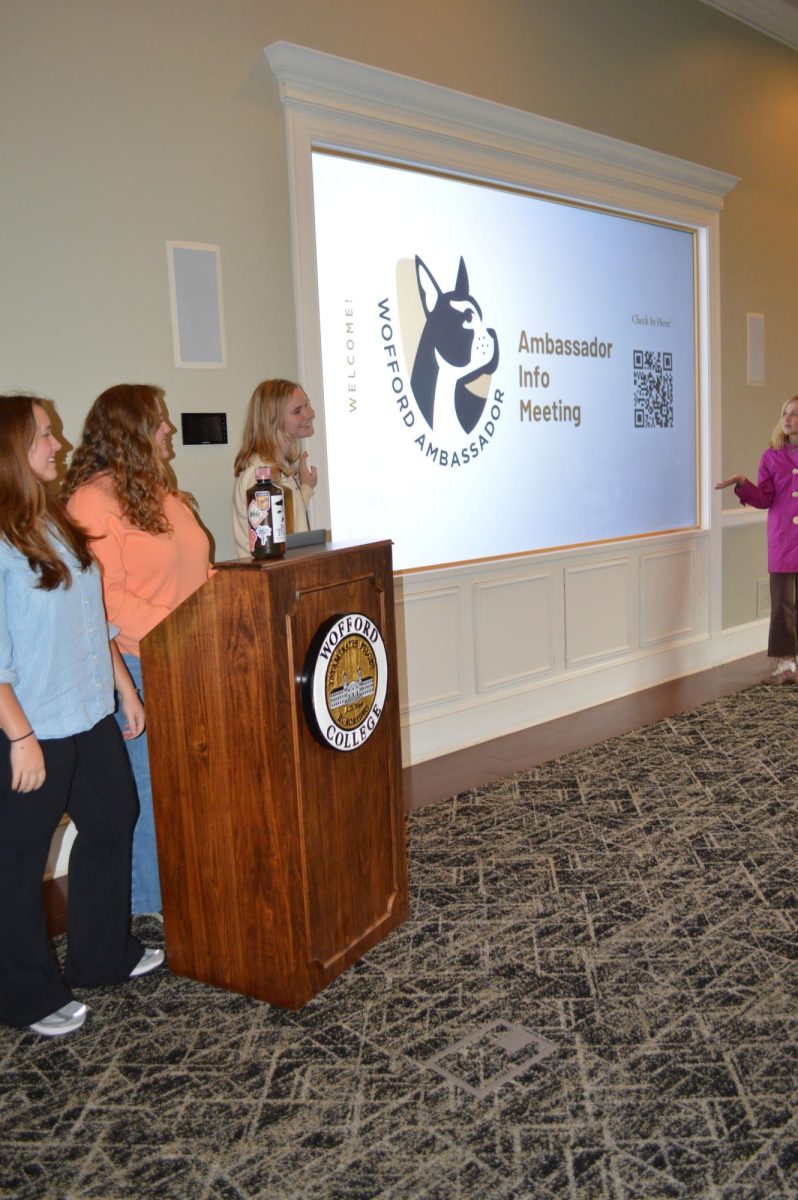The U.S. Supreme Court is soon expected to overturn affirmative action, or race-conscious college admissions.
According to the College Board, the decision will likely come out in June.
Affirmative action was a policy created to combat racial discrimination in admissions and job hiring, first created by President John F. Kennedy in 1961. It has largely been used to seek out members of marginalized groups who are underrepresented in certain workforces.
Wofford’s admissions staff has been preparing for the decision since late last year by informing the board, reading articles and looking over amicus briefs related to the case.
“There are examples of states where affirmative action has been eliminated,” Vice President of Enrollment Brand Stille said. “Most of those states have seen declines in underrepresented student enrollment.”
Most of the impacted colleges were large public schools.
Stille was unsure of how diversity statistics were affected at small private schools similar to Wofford.
Megan Tyler, director of admission, doesn’t believe that overturning affirmative action would affect Wofford’s diversity as much as it would for more selective colleges.
“We’re not using race as the only determining factor,” Tyler said. “It’s part of the discussion, but the academic rigor, GPA and competitiveness of the student is the leading part of that discussion.”
Stille echoed that race is part of a holistic consideration.
“I can confidently say that we’ve never admitted a student based on race alone,” Stille said.
Wofford implements affirmative action more so in financial aid than in admissions, according to Stille. If the Supreme Court rules that race can’t be considered in financial aid, the GOLD (Growing Our Leadership through Diversity, Equity, and Inclusion) scholarship might be eliminated.
However, need-based aid can be awarded to many of those who are currently GOLD scholarship recipients.
“With the Richardson gift, we have more resources to address the financial need of student applicants than ever before,” Stille said.
Another area affected by ending affirmative action might be recruitment, as Wofford currently sends out targeted recruiting communication based on what applicants specify about themselves.
Stille doesn’t see this being within the scope of the decision, though.
“That would be extreme, I think,” he said.
Stille assured that, no matter the outcome, Wofford plans to increase the percentage of minority students, out of state students and Pell Grant students. The targets he listed are 25%, 50% and 20%, respectively, for the class of 2030.
“We’re still going to value diversity in the same ways we do now,” Stille said. “(The decision) may change our practice, but I don’t think it will change the goals themselves.”
Alternatively, Dwain Pruitt, chief equity officer, said that overturning affirmative action will make diversifying campuses more difficult.
“There will still be ways to diversify a student body,” Pruitt said. “It’s just that they’re going to cost more and they’re going to take more time.”
The increased cost and time would be due to recruiting in different places, according to Pruitt. However, Pruitt doesn’t see the possible overturning of affirmative action as a solely negative thing.
“If Wofford wants to be different, then it’s going to have to do things differently,” Pruitt said. “That’s why I say if affirmative action is removed from the table, that can actually be a good thing, because it would require us to think more imaginatively.”
Pruitt stated that diversity is beneficial for college students because it prepares them for the global economy.
“If the opportunity presents itself in another country, we have trained students who are flexible, accommodating and humane enough to deal with people across lines of culture, religion, race and experience,” Pruitt said.
Tyler shared a similar sentiment, saying that diversity equips students with success.
“Hearing ideas that differ from your own and (having) thoughtful conversations with those people (is) a skill set that you can take into the real world,” Tyler said.
Stille mentioned diversity’s value to a liberal arts education, saying that diversity allows students to learn from those who are different from them.
“The diversity of ideas is probably the best form of diversity,” Stille said. “Many times those ideas are informed by where you’re from, your socioeconomic status, race or ethnicity.”






























